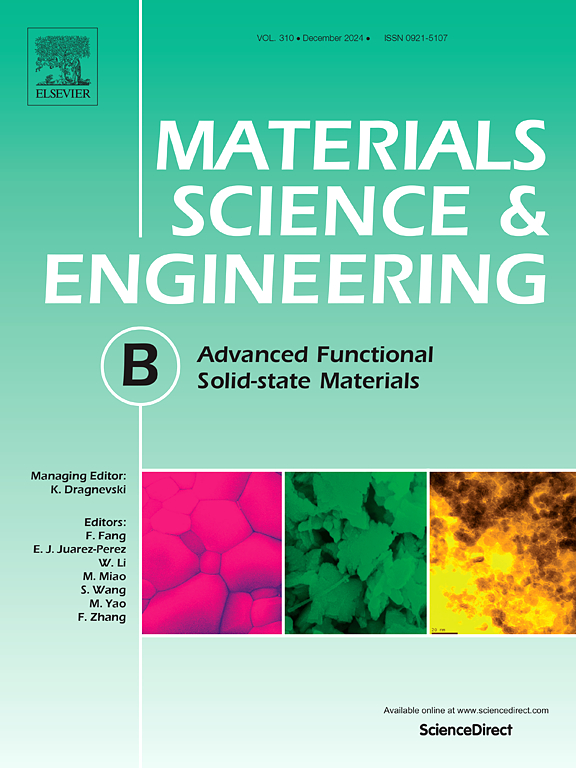Design high-performance symmetrical electrode of stable double perovskite oxides with in situ exsolved nanoparticles for solid oxide cells
IF 3.9
3区 材料科学
Q2 MATERIALS SCIENCE, MULTIDISCIPLINARY
引用次数: 0
Abstract
Solid oxide cells (SOCs) represent a potential device for the clean and efficient conversion of chemical energy into electrical energy. Double perovskite oxides, which can be flexibly controlled according to the need of crystal structure, have attracted widespread attention as electrode materials of SOCs. In this study, Sr1.8FeTa1-xNixO6-δ has been designed and thoroughly investigated as a potential symmetric electrode for SOCs. Sr1.8FeTa0.6Ni0.4O6-δ (SFTN4) can be obtained in air and it can in-situ exsolved Ni-Fe alloy nanoparticles in reducing condition. The SFTN4 sample exhibited good structural stability in pure CO2 environments. At 800 ℃, the polarization impedance (Rp) values of SFTN4 sample measured in air and H2 are 0.052 and 0.185 Ω cm2, respectively. At 850 ℃, the electrolyte-supported single cells with SFTN4 symmetrical electrode show maximum power densities of 1041.6, 613.9, 554.6 and 415.1 mW cm−2 when using H2, liquid C2H5OH, C3H8 and solid carbon as fuels, respectively. At 1.3 V, the current density for the electrolysis of pure CO2 is −2.117 A cm−2, while the current density for the electrolysis of seawater is −0.713 A cm−2 with same single cell. Summary, SFTN4 material shows great potential as a symmetrical electrode for SOCs.
求助全文
约1分钟内获得全文
求助全文
来源期刊

Materials Science and Engineering: B
工程技术-材料科学:综合
CiteScore
5.60
自引率
2.80%
发文量
481
审稿时长
3.5 months
期刊介绍:
The journal provides an international medium for the publication of theoretical and experimental studies and reviews related to the electronic, electrochemical, ionic, magnetic, optical, and biosensing properties of solid state materials in bulk, thin film and particulate forms. Papers dealing with synthesis, processing, characterization, structure, physical properties and computational aspects of nano-crystalline, crystalline, amorphous and glassy forms of ceramics, semiconductors, layered insertion compounds, low-dimensional compounds and systems, fast-ion conductors, polymers and dielectrics are viewed as suitable for publication. Articles focused on nano-structured aspects of these advanced solid-state materials will also be considered suitable.
 求助内容:
求助内容: 应助结果提醒方式:
应助结果提醒方式:


